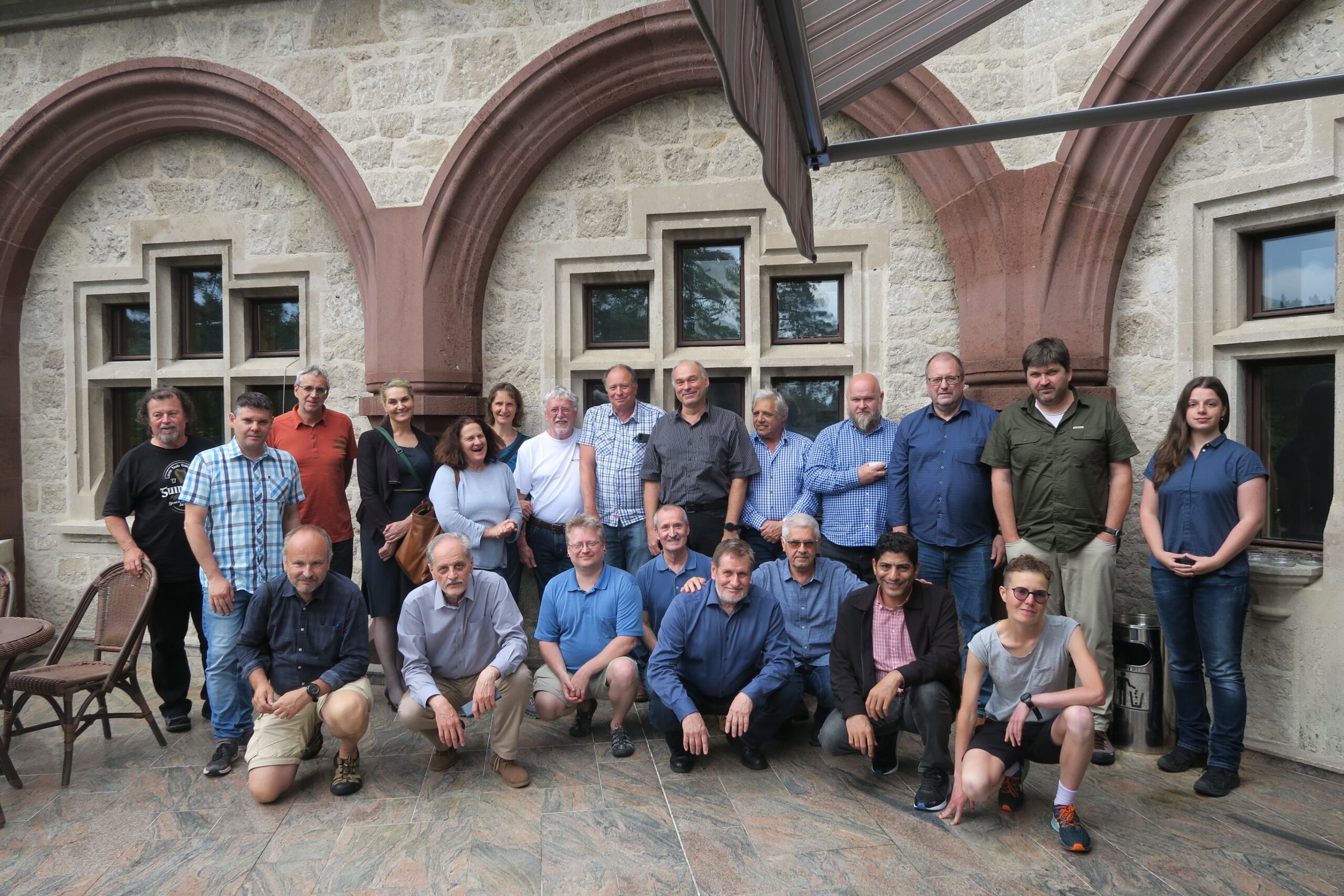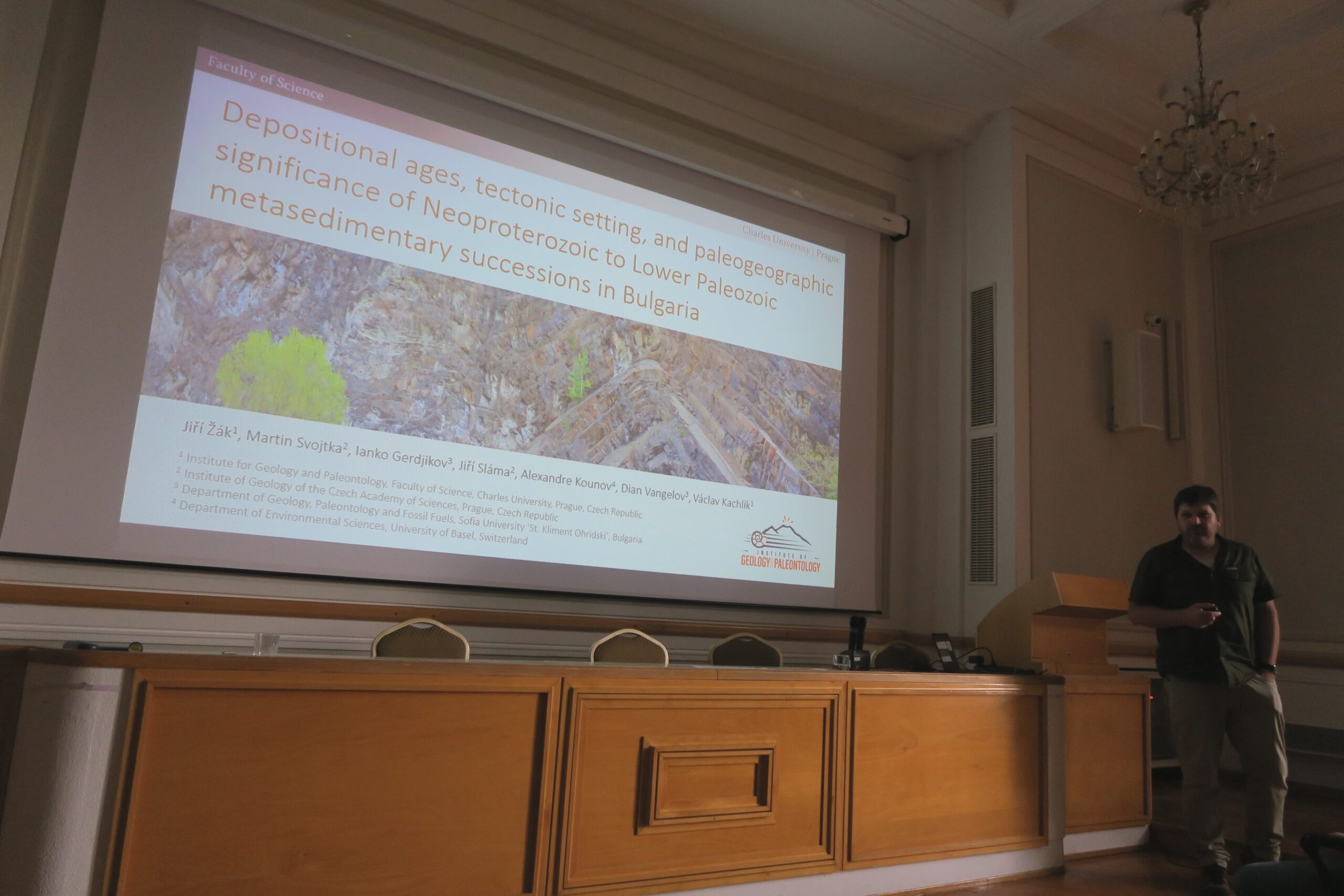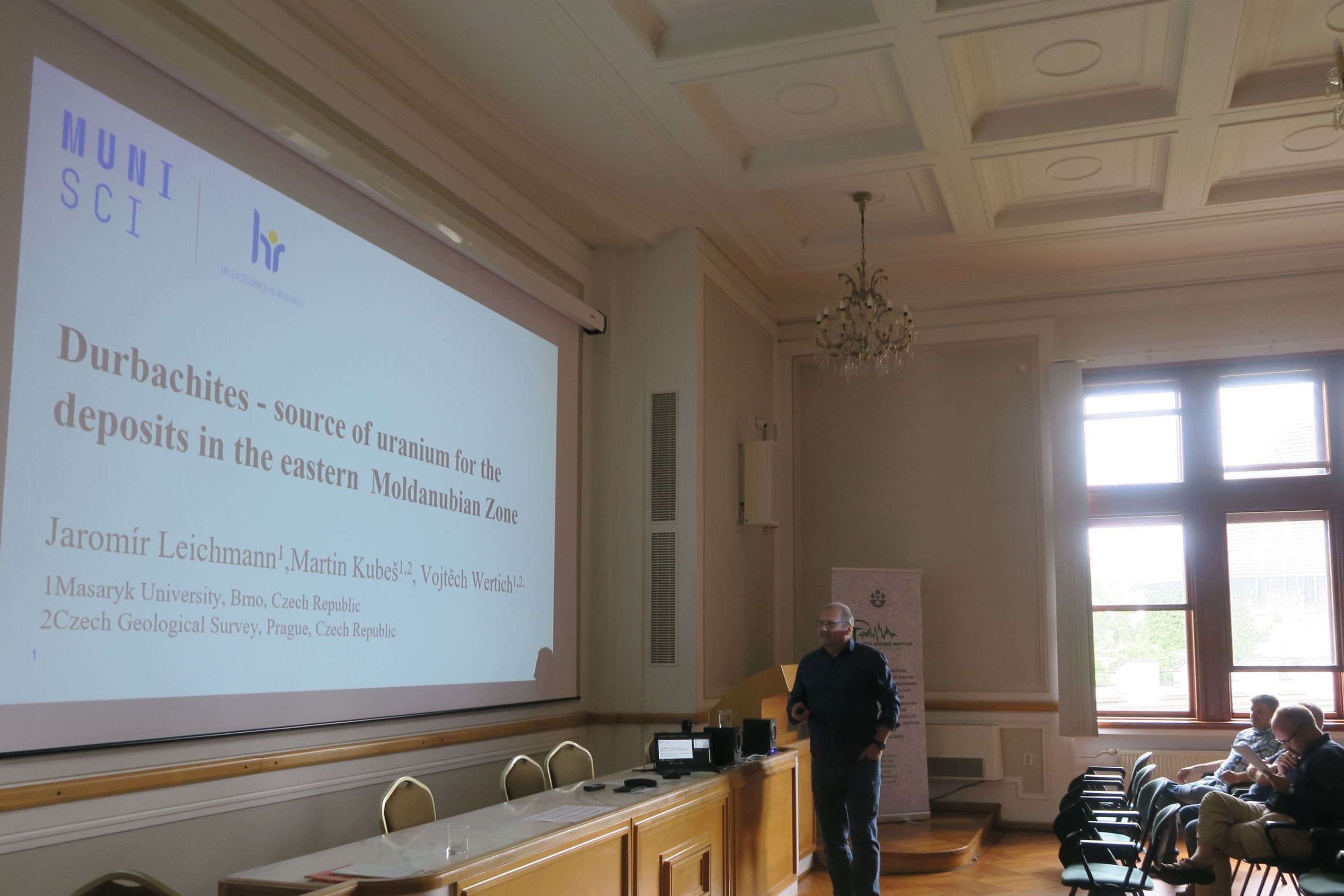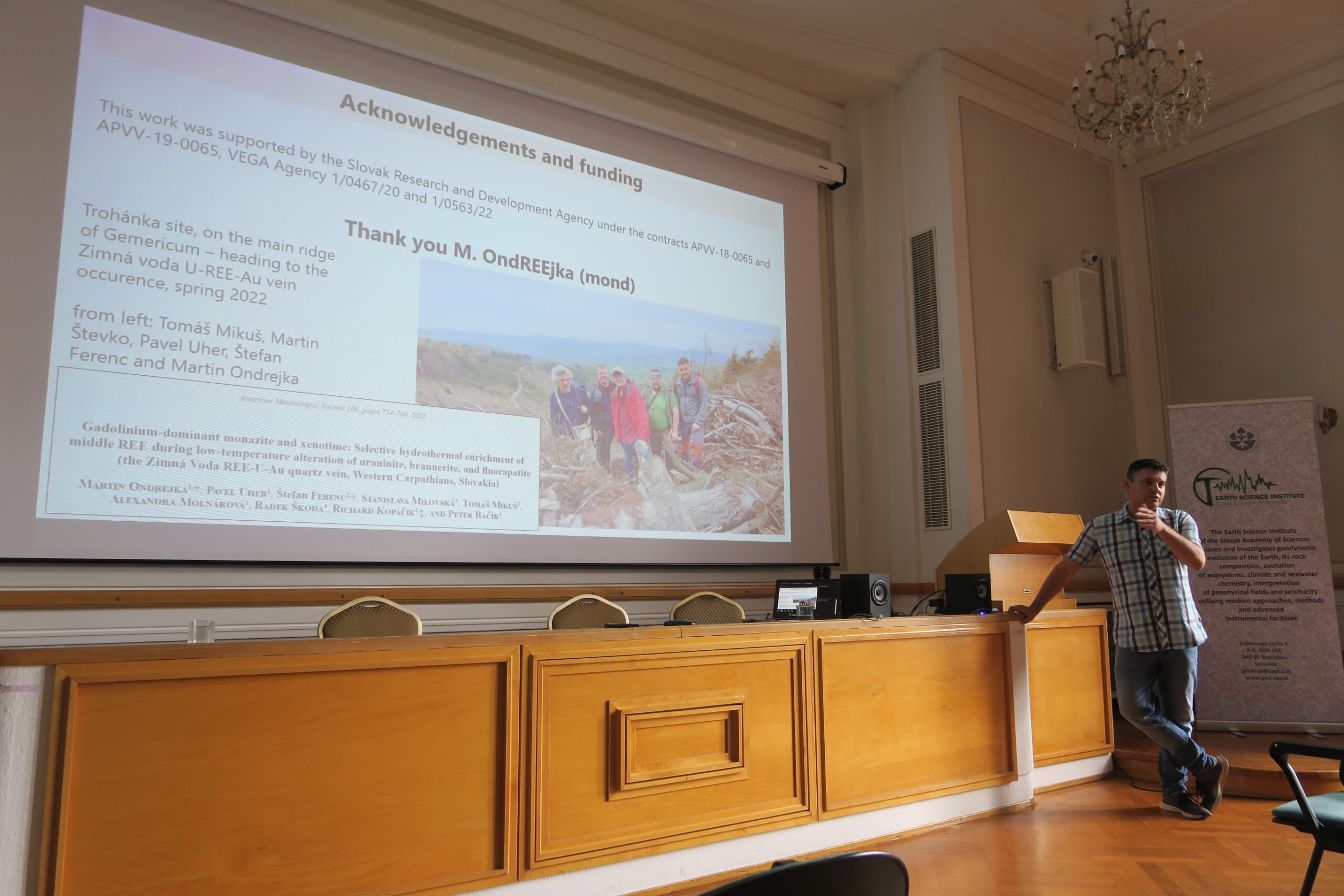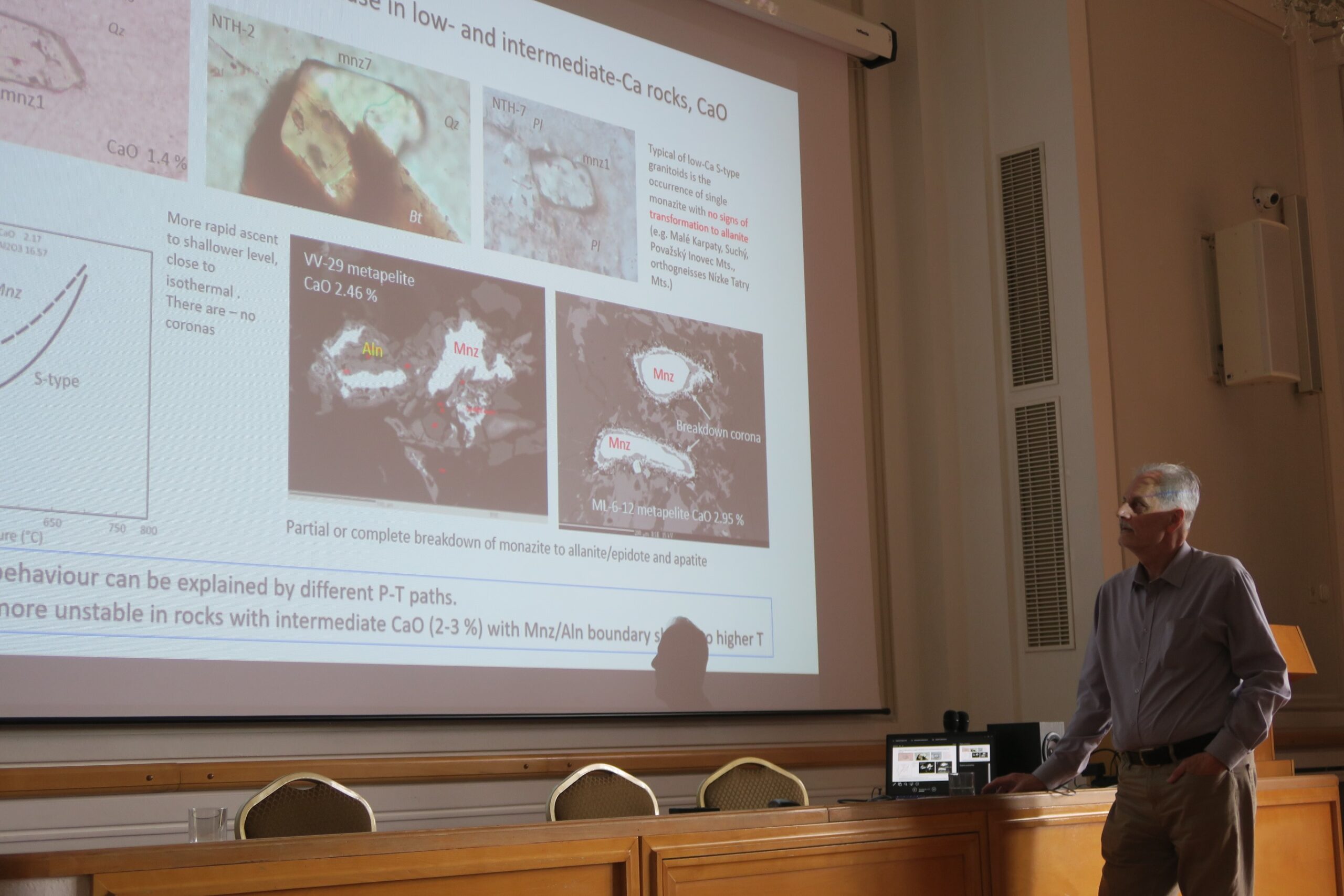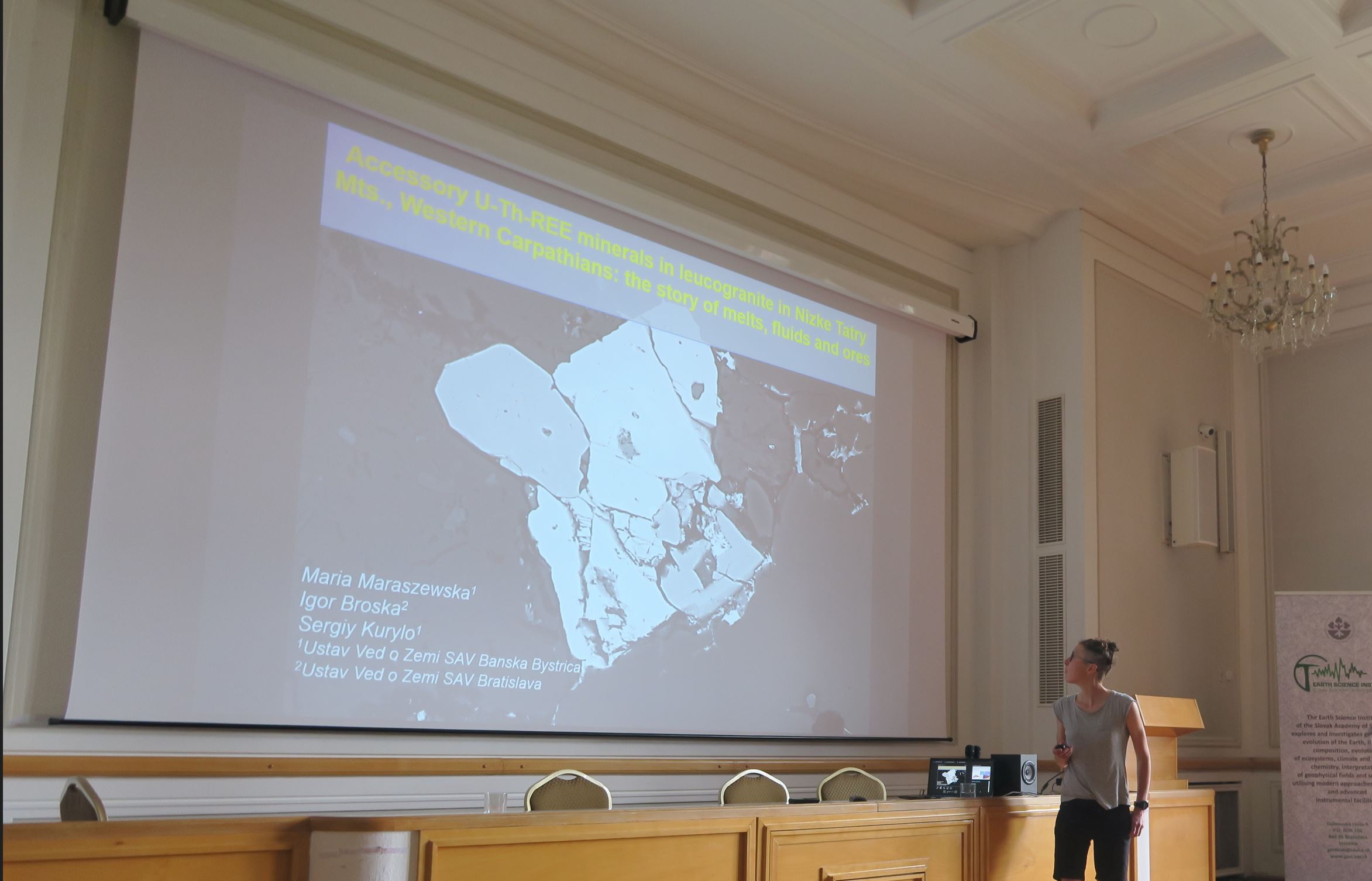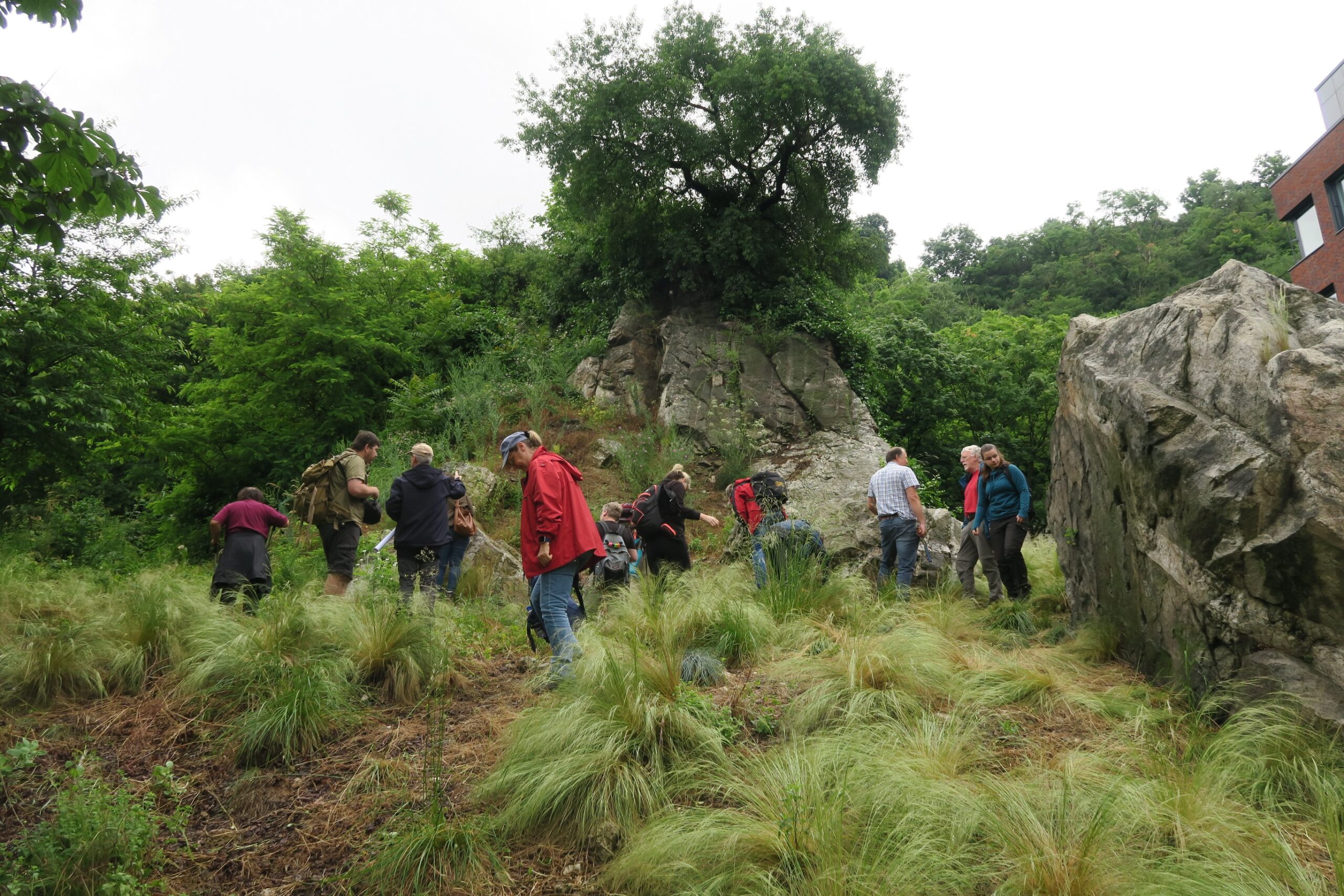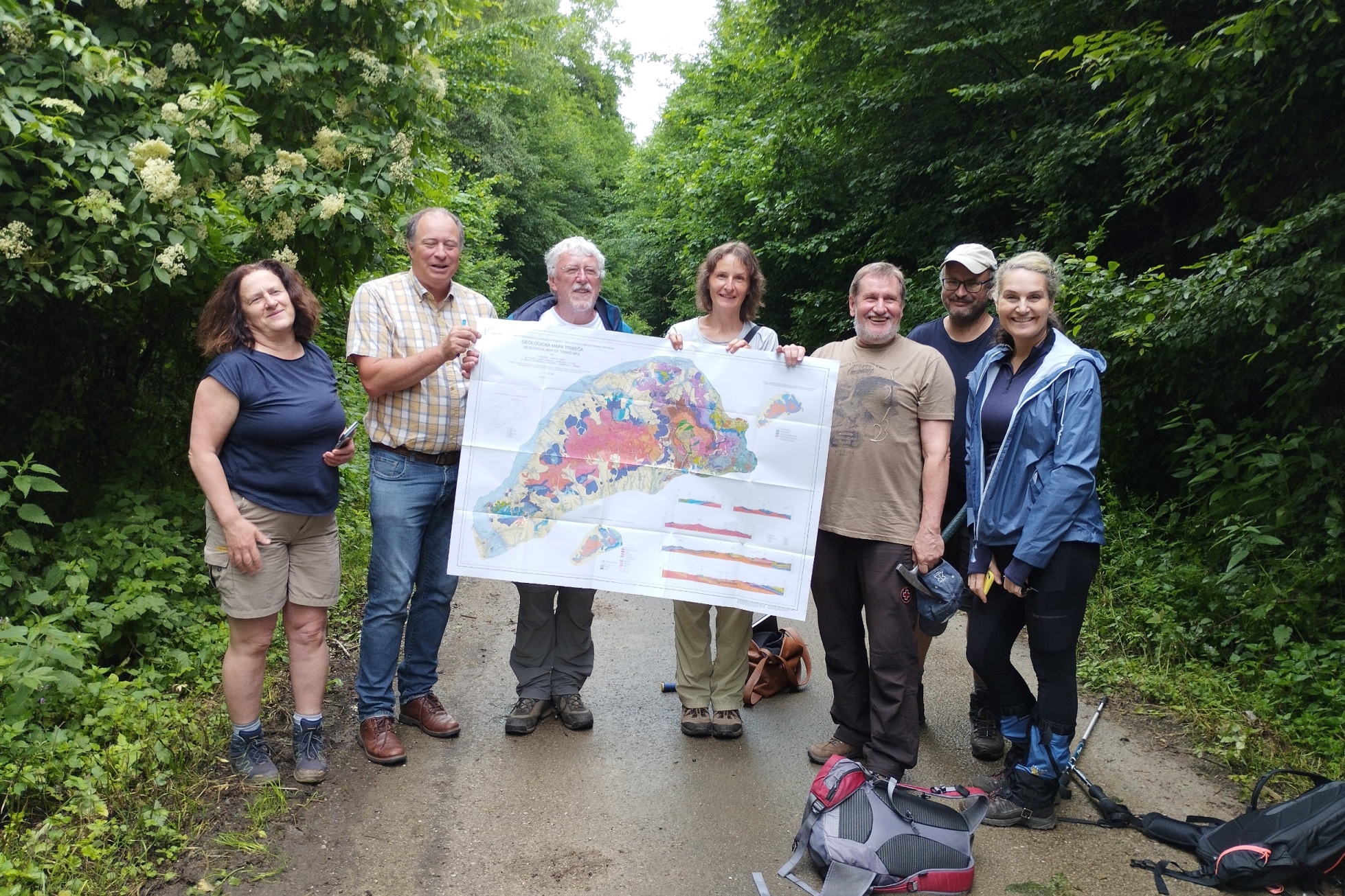The 5th Bohemian Massif Symposium was held from June 7th – 10th 2023 at the Congress Centre of the Slovak Academy of Sciences in the Smolenice castle located near Bratislava in the mountain range of Malé Karpaty. This symposium followed the successful Variscan meetings organized by Austrian, Czech, and German geologists – friends of Bohemian Massif:
2014 (Böhmerwald / Šumava – meeting organised by Friedrich Finger), 2016 (Annín – by Kryštof Verner), 2018 (Presseck – by Gernold Zulauf), 2021 (Freistadt – by Friedrich Finger).
In general, the aim of the 5th Bohemian Massif Symposium was to bring together geoscientists working in the Bohemian Massif to discuss their latest data and compare them with similar achievements from other European Variscan terrains. Due to researchers, studying crystalline basement within the Variscan fragments in the Alpine belt namely in the Eastern Alps and Western Carpathians, having problem with alteration of Variscan segments by Alpine overprint – the Bohemian Massif (BM) meeting became good open Central European platform for understanding of the Variscan evolution and basis for correlation research of Variscan fragments within the Central European Alpine edifice. Exchange of the experience on the BM geodynamics can be used for their correlation with the adjacent Variscan areas in the time of piling of new isotopic and bulk rock data.
All lectures presented at the 5th Bohemian Massif Symposium opened friendly but extensive discussion and some of them pointed to their potential for future correlation investigation. The prepared abstract proceeding is available on the website of the conference and can be a good motivation for the problematic Variscan research.
The excursion part of the 5th Bohemian Massif Symposium was aimed to show principles of the structure of the Variscan segments in the Western Carpathians. On the first day, the participants were introduced to the Bratislava Variscan granitic Massif with S-type affinity, which recent age determination shows an age of 359 Ma including several large diorite bodies in origin of the same age. The Bratislava pegmatite field is formed by pegmatites belonging to the LCT family with common beryl, Nb-Ta oxides or columbite and tantalite. The Bratislava granitic Massif also contains frequent low-grade metapelitic and metapsammitic xenoliths, which exhibit typical periplutonic contact metamorphic paragenesis – sillimanite zone on the granite contact, and more distant staurolite-garnet and biotite zones. The metamorphic granite zones point to granite emplacement in the depth of more than 15 km or at 3.5 kbars pressure conditions.
During the excursion, the participants were introduced to the Malá Baňa amphibolitic body, which forms a large roof pendant intruded by the BGM granodiorite and preserving an original metamorphic foliation. Excursion route led to the Modra granitic Massif, which recently showed the age of 353 Ma. The Modra biotite granodiorite is interesting by preservation of the abundant inherited zircons from Cadomian basement. The presence of the flecked hornfels with andalusite and cordierite indicates the intrusion of the Modra granodiorite into the upper crust at a pressure of ca. 1.5 kbars. Roof rocks – Dubová formation was shown in a recumbent fold in the Hrubá dolina Valley. The calk–silicate hornfels of Dubová formation were formed on the contact with the Modra I-(S) type granodiorite. The metamorphosed Devonian limestone and shales in outcrop was shown in abandoned large quarry.
The second day of excursion was focused on the presentation of the Variscan granites with signatures of Alpine overprint. The Krnča locality near Topoľčany became a place where the stacking of the Variscan altered granite over the unaltered Tatric Unit, represented by unmetamorphosed S-type granites, can be well documented. The stacking of metamorphosed and hydrothermally altered granites included also the Lower Triassic quartzite, the Lužná Fm. The last locality was a Nitra-Zobor abandoned quarry with I-type affinity tonalite/granodiorite.
The general slab breakoff model for the origin of the Variscan Western Carpathian granitic rocks was presented at the end of meeting, along with some remarks to geodynamic setting during the Devonian evolution.
The next meeting is planned again in the Bohemian Massif 2025, and we believe that some correlation papers initiated during the Smolenice symposium oriented mainly to comparison of the Variscan granite evolutions will became an important part for future discussion on Variscan tectonic setting, and also some ideas towards the configuration of continental fragments during the Variscan orogeny.
Text and photo: Igor Broska and Milan Kohút
